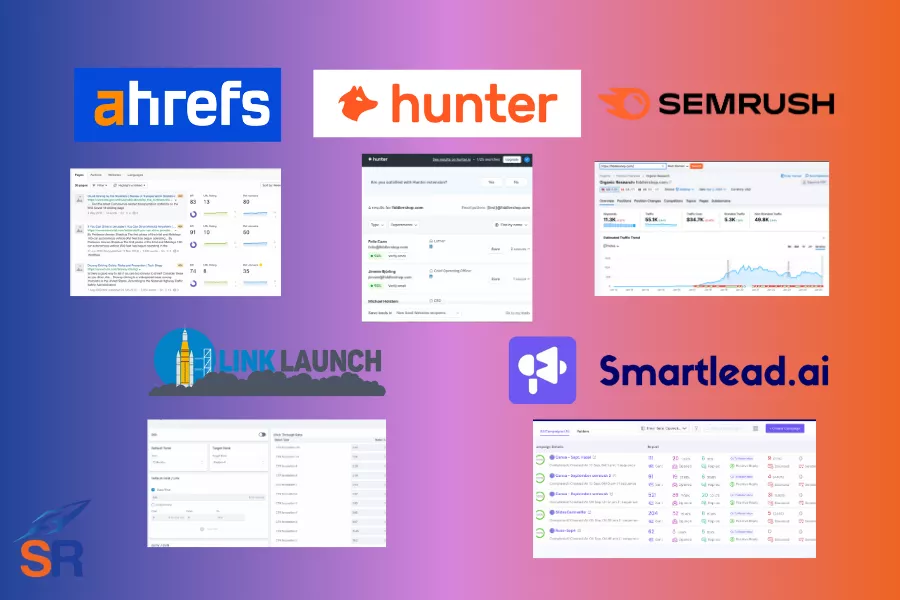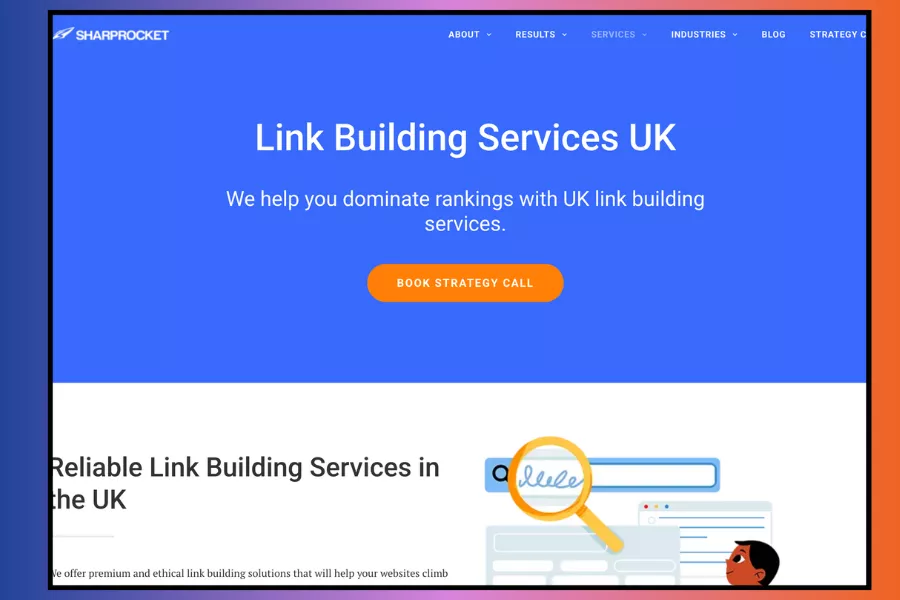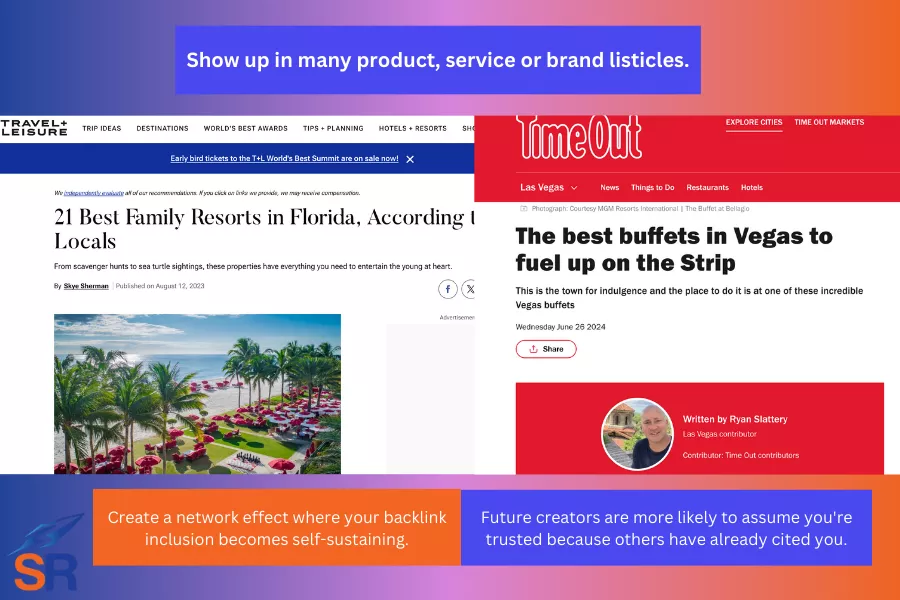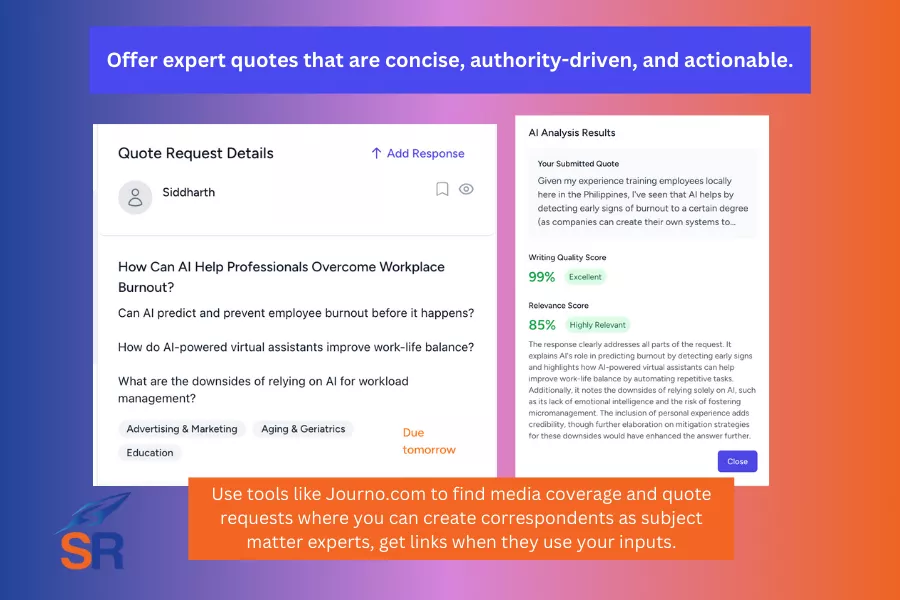Linkable assets no longer serve as pages “just to earn” links.
With our experience working with enterprise in-house SEO clients, we’ve seen the shift in the purpose of creating linkable assets. Beyond just attracting links to increase the site’s authority (and improve rankings), they must also help move users through the customer journey and support the site’s overall business goals.

Contents
ToggleA Shift in Purpose
Before, linkable assets were built with one goal: to get links from other websites. SEO specialists were focused on creating content that would go viral, get picked up by journalists, or be featured in link roundups. Once the links were earned, the job was considered done.
The challenge is that many of these pages had no clear place on the website. They were often tucked away in corners where they wouldn’t interfere with other content (which means they add little long-term value).
They were isolated. That approach no longer works.
Let me give you my new definition of linkable assets.
What are linkable assets?
Linkable assets are pieces of content created to earn backlinks while guiding users through key customer journey stages. They deliver practical value, such as templates, tools, data, checklists, or expert tips, and are built around specific user needs or early-stage problems. More than just informational, they’re structured to lead naturally toward a product, service, or next action.
Conversion-Oriented Linkable Assets
Conversion-oriented linkable assets target link acquisition efforts and assist conversions through the buyer journey.
Here are a couple of tactics you can test and implement for your brand:
1. Tie The Asset to a Problem Your Product Solves
For a linkable asset to drive traffic and conversions, it must address a problem that matters to your target audience and one that your product or service is built to solve.
When your content doesn’t connect to the actual problems your audience faces (or the solutions you offer), it becomes isolated. It may earn a few links, but won’t support your broader content strategy and brand authority.
Topping it off is the kind of traffic you want to attract from ranking with your linkable assets. It must be qualified traffic (people who are more likely to convert).
For instance, I’ve been heavily publishing franchising guides for my target audience – aspiring entrepreneurs- attracting passive links from other business bloggers and helping move visitors into the buyer journey (of inquiring about our franchise packages).

Start with real friction points.
Dig into support tickets, customer complaints, sales call transcripts, or onboarding surveys. These are all goldmines for uncovering the exact wording and issues your audience is already struggling with.
Solve one problem, not a category.
One citable element topic you can add to your landing page is content pieces that target one sharp pain point. These pieces are easier to share and connect to a product feature.
For example, instead of tackling “Remote Work Challenges”, you can zero in on one like “missed deadlines due to unclear ownership”, a quick section guide on “Why project deadlines slip in remote teams?”).
Support claims with contextual proof.
Proofs are better than promises. Instead of just listing stats, show how the problem affects outcomes. Combine data with before-and-after scenarios, customer quotes, or use case breakdowns. One tip here is to use visuals like “problem → solution” timelines or annotated screenshots that can make technical solutions easier to grasp.
Optimize for internal link flow.
Do smart internal linking to pass link equity to your site’s important pages. Link to supporting blog posts for depth (or next steps of resources) and link in from related product or resource pages.
2. Publish First-Party Data or Insights
Linkable assets that include first-party data stand out. You collect these insights directly from your audience, customers, or internal stakeholders. Given they’re original and reliable, they can earn links that are hard to replicate by your competitors.
Most websites repeat the same statistics from popular blogs and reports, but when your asset shares data no one else has, you position your brand as a source instead of a mere distributor of information. This helps you draw attention and potential links from journalists writing industry stories, bloggers looking for original stats, and educators referencing niche topics.
How first-party data attracts links:
- Become the original source. Publishing unique data makes your site the primary reference point.
- Get cited in link roundups and other industry reports. Writers constantly search for new stats for listicles, “top trends,” or “industry reports” (your original data gives them exactly what they need).
- Attract organic shares without manual outreach. When your insights are genuinely helpful, surprising, or time-sensitive, they provide a reason for people to share them naturally.
- Builds initial trust that earns links—the idea of having “statistics” itself initiates trust, as it is not something you can easily create without putting in enough work.
- Earn natural links from your brand’s network. Customers, partners, and vendors may use your data in their business presentations, decks, and offline resources.
- Automate link building via ranking for stat-based search queries. Make sure you properly optimize your content for target stat keywords.
3. Identify the Step Before Your Solution
While the first tip of aligning your asset with a problem your product directly solves, another powerful approach is to go one step earlier:
Create content around the steps before someone needs your product.
These are research-driven, early-stage actions before they’re ready to buy, subscribe, or engage.
Meeting them at the stage makes your content more than link-worthy. It becomes a bridge that connects their current challenge to your solution.
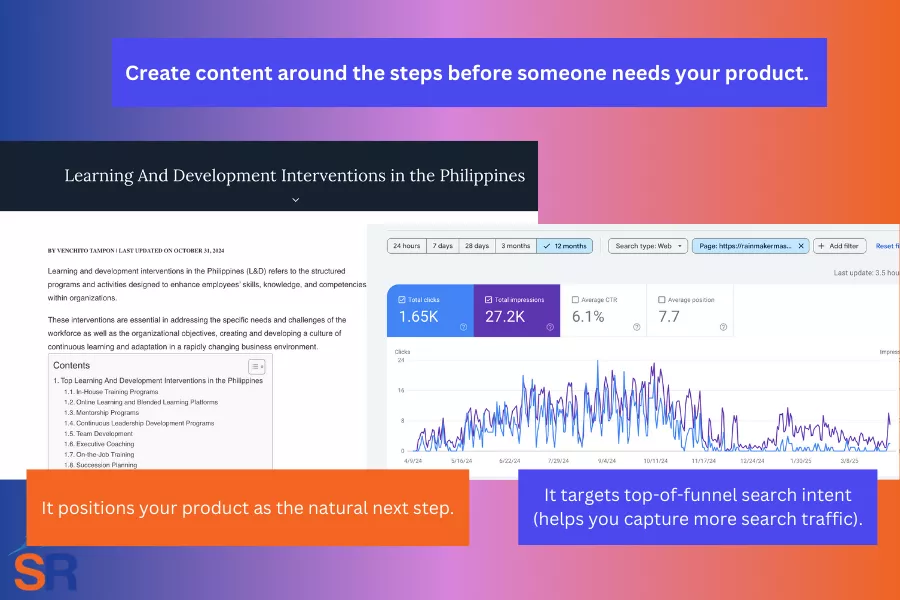
Why “before-the-solution” linkable assets work:
- It targets top-of-funnel search intent (helps you capture more search traffic).
- It attracts backlinks from educational and industry resources in your space.
- It positions your product as the natural next step
- It builds trust by adding value and genuinely helping people before selling
In creating linkable assets based on the steps before your solution, you need to understand your audience’s decision-making process, not just what they need from you, but what they must go through before they realize your product is the answer.
Start by asking these questions.
1. What does someone need to understand, research, or prepare before they can use our product?
Think about the learning curve or awareness stage that your customers go through.
- Are they researching how to fix a specific issue?
- Are they comparing methods, tools, or strategies?
- Do they need to build a case internally before buying?
For instance, if you’re doing a cybersecurity SEO campaign, you might identify that buyers first research “how to perform a security audit?” before looking for software, so a great linkable asset: “Step-by-Step Guide to Running Your First Cybersecurity Audit”.
2. What issue or blocker do they typically face before they convert?
Identify the friction point that causes hesitation or slows the path to purchase:
- Are they unsure of what solution fits their situation?
- Are they missing resources, clarity, or approval?
- Do they fear making the wrong choice?
A good example of this is analytic tools (link building for SaaS), where you might discover potential buyers struggling to understand what metrics they actually need to track (creating a content asset on “10 Key Marketing Metrics Every Growing Business Should Watch and Why They Matter”).
3. What content would help them at that point, and naturally lead to our solution?
Create content that meets them at that point with practical help. Shift from analyzing user intent to building a resource that solves their immediate need, without pushing your product too hard.
You earn links this way and create a moment of clarity where the reader thinks it is exactly what they need and sees if your website (brand) offers any solution.
4. Offer Zero-Friction Tools or Templates
Getting easy and early access to tools or templates people can use without barriers, signups, or complex instructions makes an asset linkable.
These linkable assets work because they deliver instant value, resulting in a resource that solves a specific, clearly defined problem.

Why zero-friction tools are solid linkable assets:
- Solves real, immediate tasks (increases the page’s usefulness)
- Easy to share or embed (content creators and publishers love linking to practical tools)
- Naturally leads to your product (once users rely on your free resource, they’re more open to using your full platform or solution).
Here are a couple of formats of zero-friction tools or templates:
- Editable templates – Google Sheets, Notion, or Canva files that users can customize (e.g., 30-Day Social Media Planner Template)
- Checklists and worksheets – step-by-step guides, printable PDFs, or fillable forms (e.g., Product Launch Readiness Checklist)
- Mini tools and calculators – quick-use tools that help estimate or compare something (e.g., Email List Cost Calculator)
- Scripts and prompts – ready-to-use messages for outreach, sales, or communication (e.g., 5 Sales Email Templates That Get Replies)
- One pager and visual frameworks – simple visuals like flowcharts or decision-trees (e.g. Marketing Funnel Fix-it Flowchart)
You can optimize pages to include these zero-friction tools and rank for problem-solving queries, increasing your chances of earning more passive links through high rankings.
5. Apply Unique Expertise to Sales Pages
Use your team’s specialized knowledge (research, process insights, etc.) directly on your product or sales pages. This will transform your standard transactional content into link-worthy referential material that adds value beyond the sale (and publishers will link to it, even if it is commercial in nature).
What to include based on your expertise:
- Proprietary scoring or rating systems
- Common mistakes your product helps prevent
- Internal benchmarks or quality thresholds
- Use-case scenarios from support or onboarding logs
- In-house tips, techniques, or shortcuts
- Chronology or iteration history of product development
- Decision-making frameworks used by your team
- Internal testing protocols or standards
- Product-specific troubleshooting insights
- Expert-recommended usage routines or best practices
One good example, if you’re doing eCommerce SEO, is publishing a best practice angle:
“Our in-house ergonomics team recommends adjusting the chair height so your elbows form a 90-degree angle while typing. This position reduces shoulder tension and improves long-term posture. That’s why our chair includes a guided adjustment checklist under the seat.”
This example draws from expert-recommended usage routines, which address a common user challenge – a value-add to your product page, reinforcing your brand authority.
Need help with your link building campaigns? See our link building services and let’s have a free strategy call.
Written By
Venchito Tampon
CEO and Co-Founder at SharpRocket, a link building agency. With a decade of experience, Venchito has a proven track record of leading hundreds of successful SEO (link builidng) campaigns across competitive industries like finance, B2B, legal, and SaaS. His expert advice as a link building expert has been featured in renowned publications such as Semrush, Ahrefs, Huffington Post and Forbes. He is also an international SEO spoken and has delivered talks in SEO Zraz, Asia Pacific Affiliate Summit in Singapore, and Search Marketing Summit in Sydney, Australia. Check out his other business - Hills & Valleys Cafe.
Reviewed By

Sef Gojo Cruz
COO at SharpRocket, overseeing end-to-end operations, from crafting link building strategies to leading high-performing teams. Previously led SEO initiatives at Workhouse, a digital agency in Australia, and Keymedia, a real estate media company based in New Zealand.
How our LINK BUILDING AGENCY in UK builds 250 links/mo consistently using Predictable Link Building Methodology™…
- Using a SIMPLE and PROVEN system
- Using a SCALABLE strategy
- No private blog networks
- No creepy outreach emails


